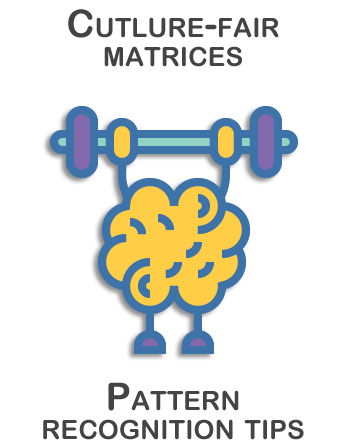Matrices examples

- Solve culture-fair matrices using the four-step method.
- Decode the structure of matrices.
- Anticipate common items, zones, actions, and properties.
- Solve matrices faster and with greater accuracy.
Discover your intellectual strengths

There are usually four to six elements for each question that provide the necessary information for piecing the puzzle together.
Example 1:

Relevant elements:
In the third row, all shapes move diagonally.
Example 2:

Relevant elements:
In the third row, the top half lines move CW, and the bottom half-lines move CCW.
Example 3:

Relevant elements:
There should be three of each item set. The missing items are the large blue dot, with smaller dot/rings at 60° to each other.
Example 4:

Relevant elements:
For each row, there are two individual basic shapes that merge to form a new shape.
The merged shape contains everything in the component parts.
The shapes merge to create three compartments.
Example 5:

Relevant elements:
In every row, the arrows increase by one in each column, and the box rotates 45°.